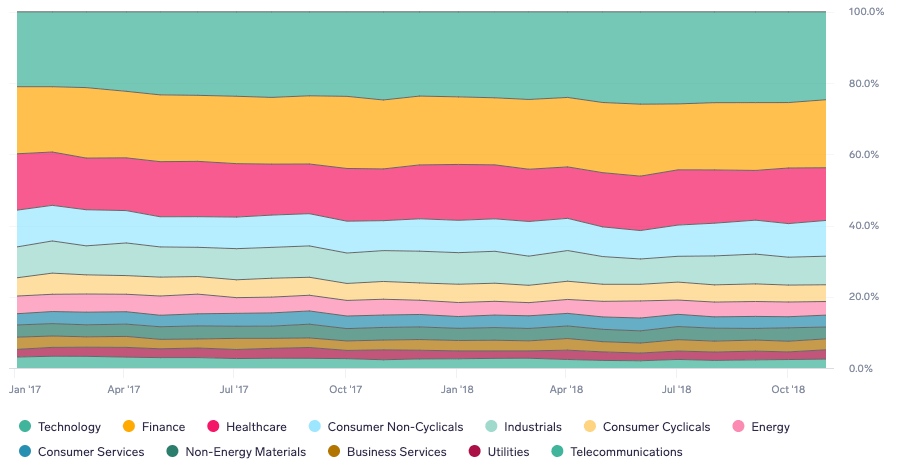Portfolio Strategies - Results
Portfolio Strategy results show the most important backtest metrics on the top, and then break down performance into commonly known style, industry and country components. Turnover, coverage, leverage, industry and sector exposures are shown across time to gauge the portfolio better in terms of the benchmark. Most importantly, you can track the portfolio allocations individually on each stock to see changes across different rebalances.
Return & Risk Metrics
The simulations are made using equal bet size, meaning that one unit of funds is invested each day allocations are made, without reinvesting the returns from the previous allocation. So comparison with a linear trend would give an idea of the profitability of our portfolio allocation. Sharpe ratios are ideal to evaluate long short portfolios that are cash neutral. Information Ratios on the other hand capture the spread relative to the market, and hence are suitable for portfolios with a long tilt.
Turnover is calculated as one half of the sum of the absolute value of weight changes across rebalances. E.g. If the strategy sells $1000 of Apple and buys $1000 of Alphabet, we count that as a turnover of $1000.
Style Attribution

Returns are broken down into commonly constructed style factors like momentum, value, size etc. to identify the specific return that remains after accounting for the above. The market factor is essentially the benchmark weighted return of the coverage universe.
Sector & Country Exposures

A useful visualization to identify any systematic tilts taken towards industries and countries. In the example shown, we can see a growing exposure to Tech stocks, which is understandable given the weightage to webtraffic and credit card transactions.
Allocations

Perhaps the most useful tool as the result of a backtest, this button could be used to generate the latest allocations for you to check what stocks are ranking at the top, and which ones are moving out of the most recent portfolio. The green and red highlights indicate overweight and underweight stocks with respect to the benchmark or change from previous rebalance, depending on what you choose in the “Heatmap” selector at the top of the table.
Comparing long-only and long/short strategies
Any long only strategy can be seen as the sum of a passive index position (the same allocations as the benchmark) and a long/short strategy with the overweight and underweight positions versus the benchmark.
Many of the performance metrics for a long only strategy are mathematically equivalent to other performance metrics for the corresponding long/short strategy. For instance, the active return (excess return versus benchmark) of a long only strategy is the same as the return of the long/short strategy. Thinking in this way can help to understand the performance of a long only strategy, and compare it with the results observed for long/short strategies using the same alpha factors.
This table shows the corresponding performance metrics:
Long/short metric | Long only metric |
|---|---|
Return | Active return |
Standard deviation | Tracking error |
Sharpe ratio | Information ratio |
Gross exposure | Benchmark deviation |
Similarly, there is a correspondence between these risk settings for a long/short strategy versus a long only strategy:
Long/short setting | Long only setting |
|---|---|
Maximum gross exposure | Maximum benchmark deviation |
Maximum long allocation | Maximum overweight |
Maximum short allocation | Maximum underweight |
Reduce absolute volatility | Reduce tracking error |
Updated 26 days ago